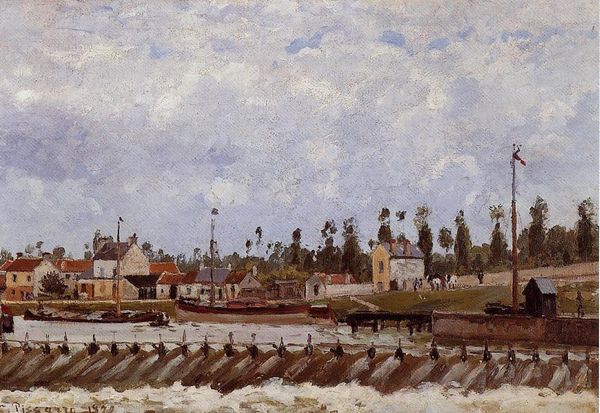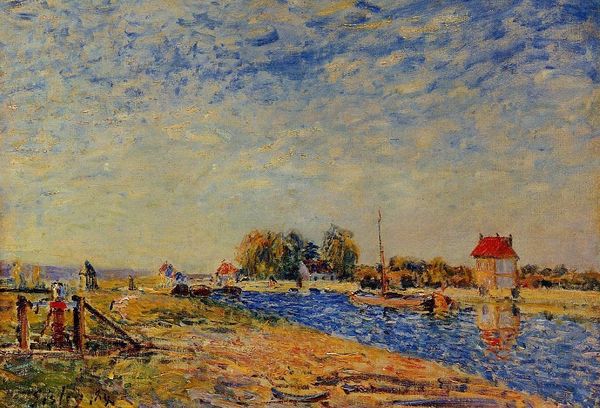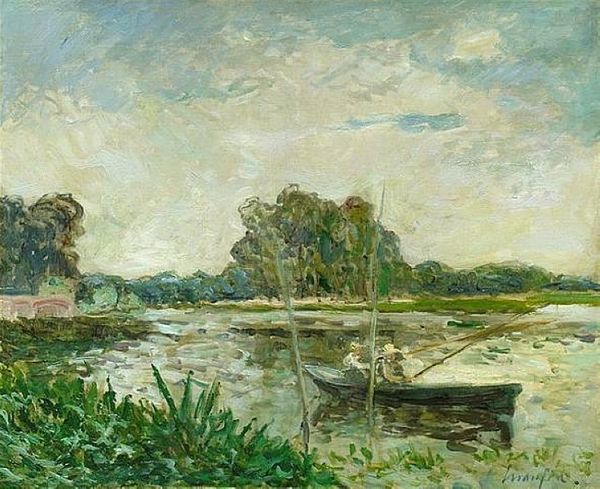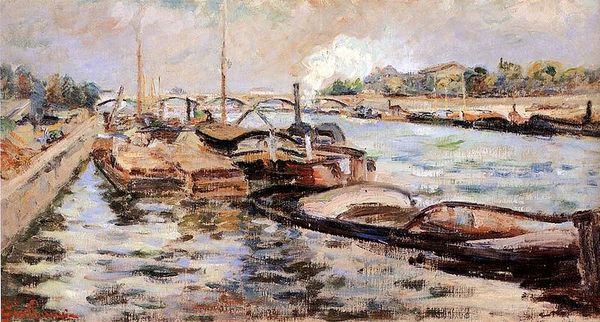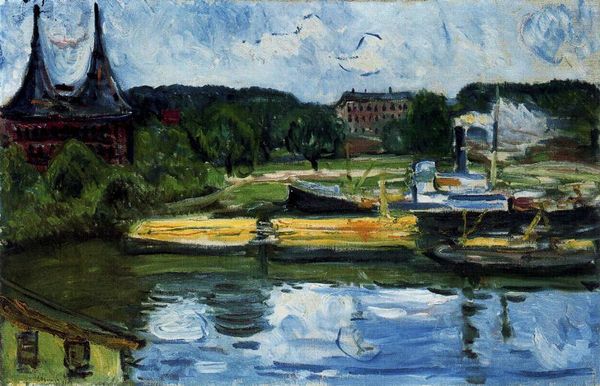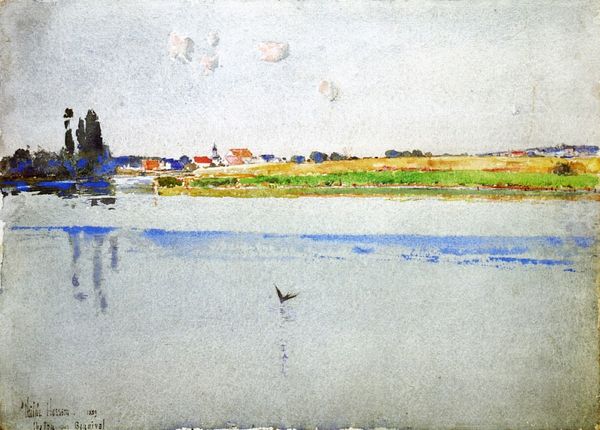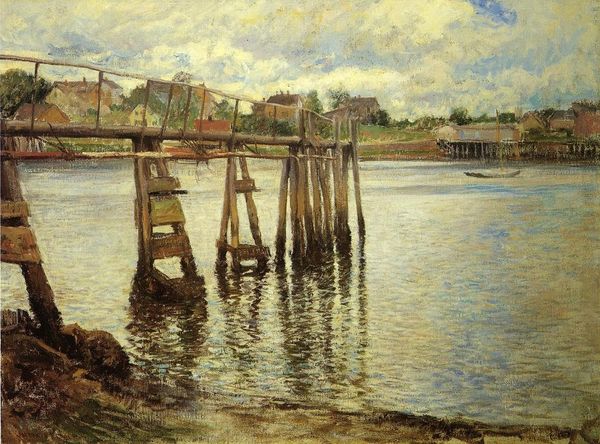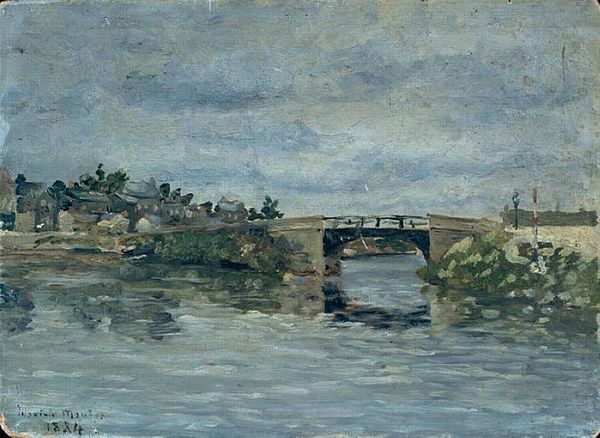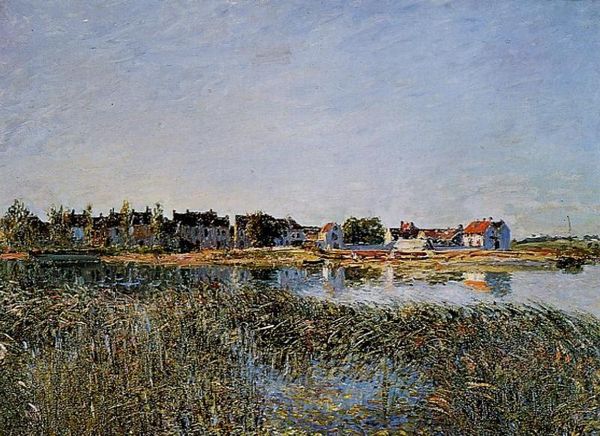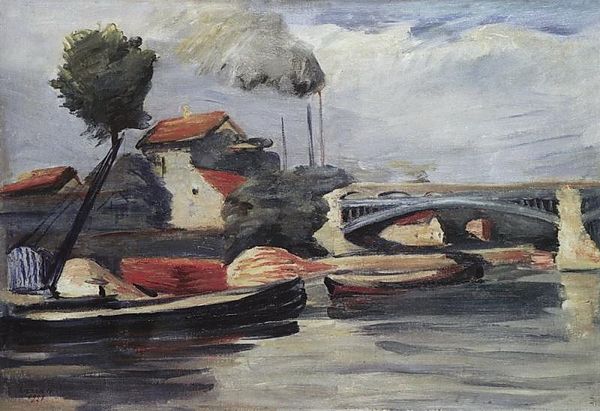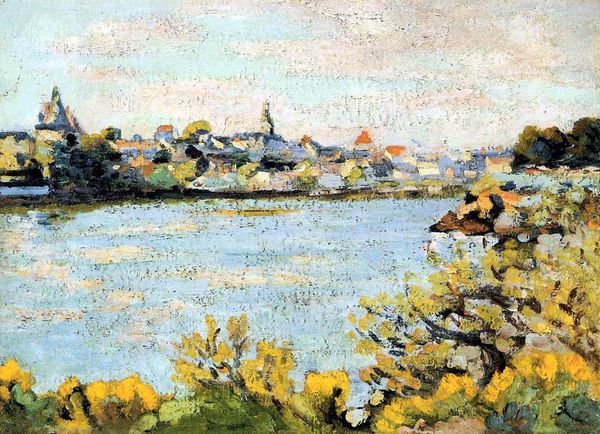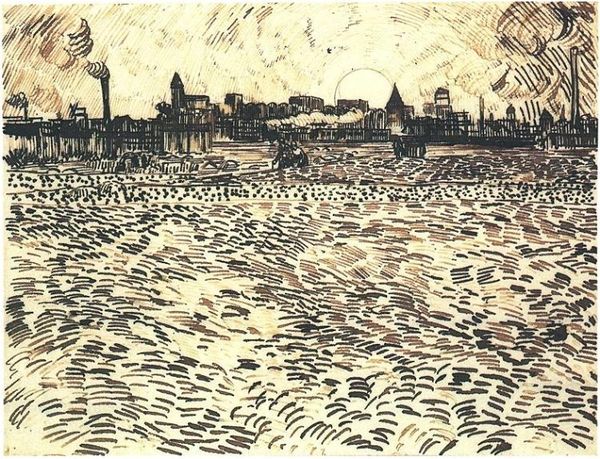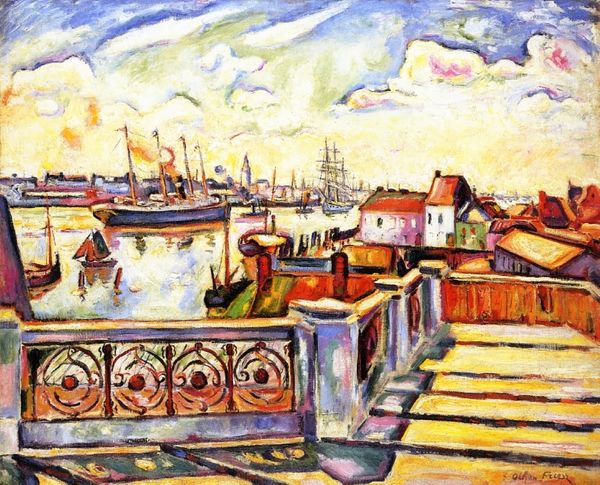
watercolor
#
sky
#
urban landscape
#
landscape
#
watercolor
#
geometric
#
water
#
russian-avant-garde
#
cityscape
#
modernism
#
watercolor
Copyright: Public domain US
Editor: So, here we have Anna Ostroumova-Lebedeva's "Petrograd. Red Columns," a watercolor from 1922. It’s quite a stark cityscape, almost melancholy with those prominent, looming columns reflected in the water. What do you make of it? Curator: Immediately, I see these almost totemic structures rising from the water. Their stark geometric forms are fascinating. Think about the role of columns historically – they are symbols of strength, stability, and order. But here, set against a post-revolutionary Petrograd, what do these red columns *mean*? Are they celebrating the new regime, or marking a change? Or even, warning of a coming flood, when stability turns into ruins? Editor: That’s interesting – a celebration, warning or transformation. I was mostly reacting to how imposing they seem! Almost like figures. Curator: Precisely! Their anthropomorphic quality draws the eye upward, but also reflects back to the turmoil churning underneath the surface of the water, the undercurrent of Russian society at the time. And those subdued colours – they’re not joyous, are they? The symbolism becomes less about architectural triumph and more about cultural memory. Editor: I see what you mean. It's not just about the literal structures, but what they represent and what the artist is perhaps suggesting about that historical moment. So even seemingly simple forms carry a heavy load of meaning. Curator: Yes, these images can remind us that cultural memory is a key to art. How shapes carry symbolic weight from past events. Every time someone sees the colors of that river and towers, they may have echoes in their minds of Russia, Petrograd, the avant-garde! Editor: I'll never see a column the same way again! It has me thinking about how we use symbolic images and what message we are trying to send.
Comments
No comments
Be the first to comment and join the conversation on the ultimate creative platform.

